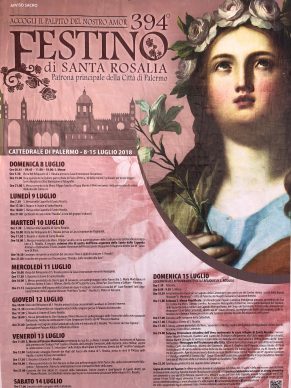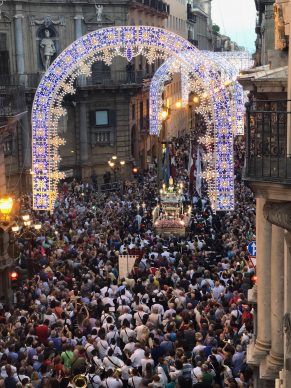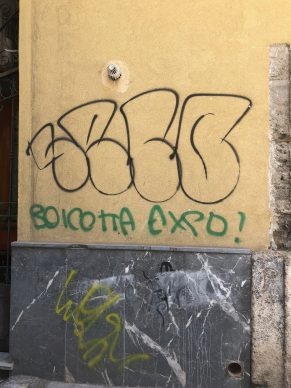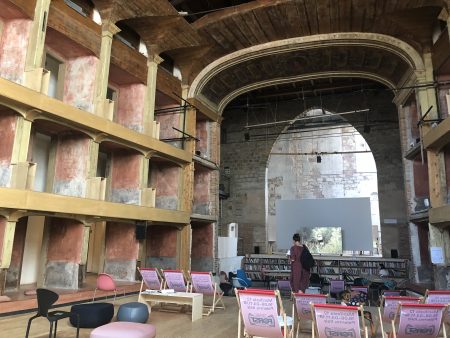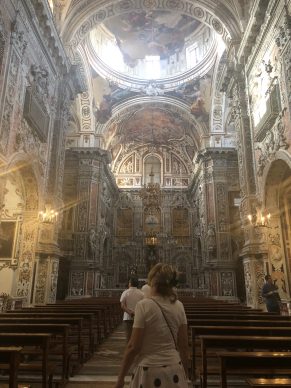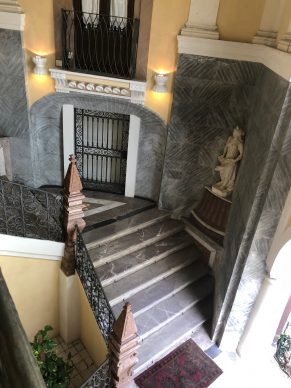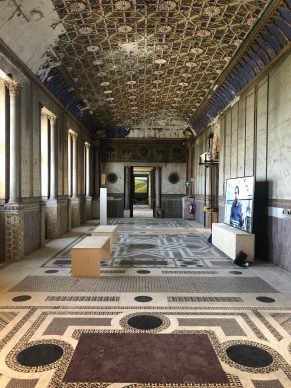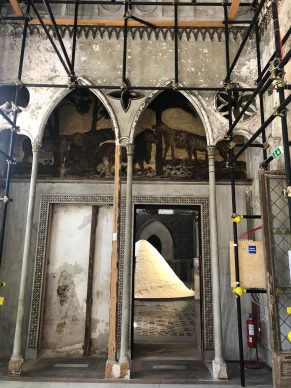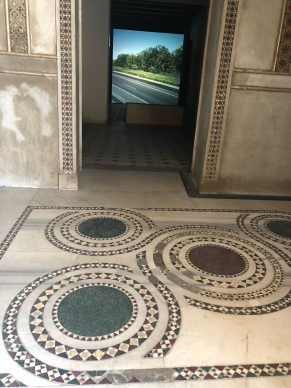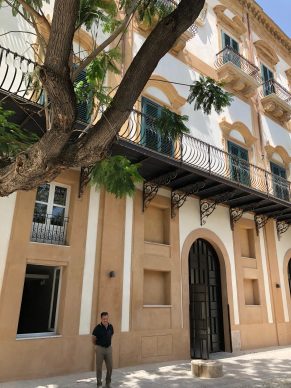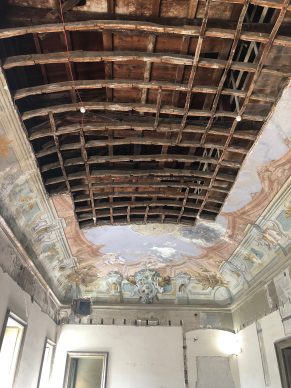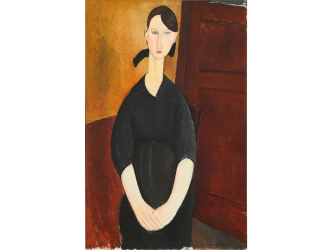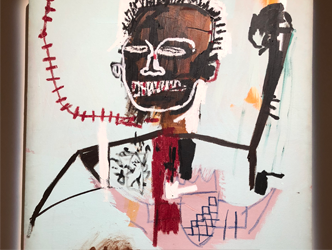On an officially more intellectual note – although exactly how intellectual is often debatable – the second activity of this type involves visiting biennials and hunting for works of contemporary art dispersed across an entire city. From 15 June to 4 November, the roving European biennial Manifesta is being held in Palermo. It is displaying 50 artists scattered across 20 different sites, requiring an unusual level of involvement plus unlimited time to be able to take in the show in its entirety.
I visited not for the show’s opening in June, which was already jam-packed, but on the occasion of the most important Palermo festival of the year: Festino of Santa Rosalia.
Rosalia of Palermo, who was born at the beginning of the 11th century, saved the city from the plague in the 17th century.
She is celebrated over the course of three days with a procession, a parade from the local authorities, fireworks and religious celebrations of spectacular devotion.
The press release stated that “Manifesta 12 is not a foreign body fallen upon the city like a meteorite”, and yet there is every reason to believe it is. First of all because during the most important local festivities of the year not one of the four curators of the show were present, not even Hedwig Fijen, the founder of the operation.
The mayor of the city, Leoluca Orlando, known for his courageous fight against the mafia since 1985 and for his attempts to integrate migrants into his city in recent years, is also focusing on culture. He was the one who sought out Manifesta to ask that it be based in his city for its twelfth edition.
However, a majority of the Palermitani I met – including those in intellectual circles – feel excluded from Manifesta 12 and have yet to pay a visit.
The most significant thing we observed, having visited the majority of the Manifesta 12 sites with the sun beating down on the maze of little streets in the sublime city, is that in the match between Palermo and Manifesta 12 there is no question that Palermo emerges victorious.
But why is there this opposition between the city and the contemporary art?
Because for the most part the artworks are of a trivial nature, whereas the venues that have been selected are strikingly beautiful. A hugely rich and opulent past which contrasts with a poor and dirty present, yet still produces an authentic charm.
Palermo is sublime in its decadence and its profusion of palaces, churches and theatres, whose styles are influenced by the Normans, the Moors, the Spanish, the Byzantines, the Italians…
Few of the works in Manifesta make you really want to stop and look. They also give the impression of a rootless form of culture, despite the official wish to “cultivate coexistence”.
Among the exceptions, there are the striking videos made by the Swiss artist Uriel Orlow (born in 1973) documenting the lives of migrants as they settle in Palermo, and the Italian filmmaker Yuri Ancarani (born in 1972) who has placed in parallel a ritual performing the gestures of whipping slaves in Haiti with black men working to collect metal objects. The whip and the hammer beat rhythmically together with hypnotic regularity.
It is definitely worth visiting Palermo’s botanical gardens, established in the 18th century, displaying lush and exotic plant species alongside a video by the Chinese artist Zheng Bo (born in 1974) installed in the midst of a bamboo grove, which over 37 minutes shows deeply involved young people who seem to be making love to plants. “Pteridophilia explores the potential of eco-queer” explains the label. It may not have been thought of yet, but the result is not lacking in grace.
The city impatiently awaits the opening in about a year’s time of the Palazzo Butera on the coast, bought by the Genoan-born collector Massimo Valsecchi and his wife Francesca, which they are going to have meticulously restored. Valsecchi, who has long resided in England, will display his collection there (Gerhard Richter, Gilbert & George…) but his primary aim is to put on exhibitions that are pro-European manifestos in dialogue with African and Muslim culture, as Palermo itself has done so well down the ages.
Massimo Valsecchi, whom we met briefly, did not wish to go into any further detail on his projects.
As Giuseppe Tomasi di Lampedusa said in his cult book, “The Leopard”, which inspired an iconic film by Luchino Visconti with Burt Lancaster and Alain Delon that took place in Palermo and heralded the decline of the sublime city:
“If we want things to stay as they are, things will have to change.”
Donating=Supporting

Support independent news on art.
Your contribution : Make a monthly commitment to support JB Reports or a one off contribution as and when you feel like it. Choose the option that suits you best.
Need to cancel a recurring donation? Please go here.
The donation is considered to be a subscription for a fee set by the donor and for a duration also set by the donor.


